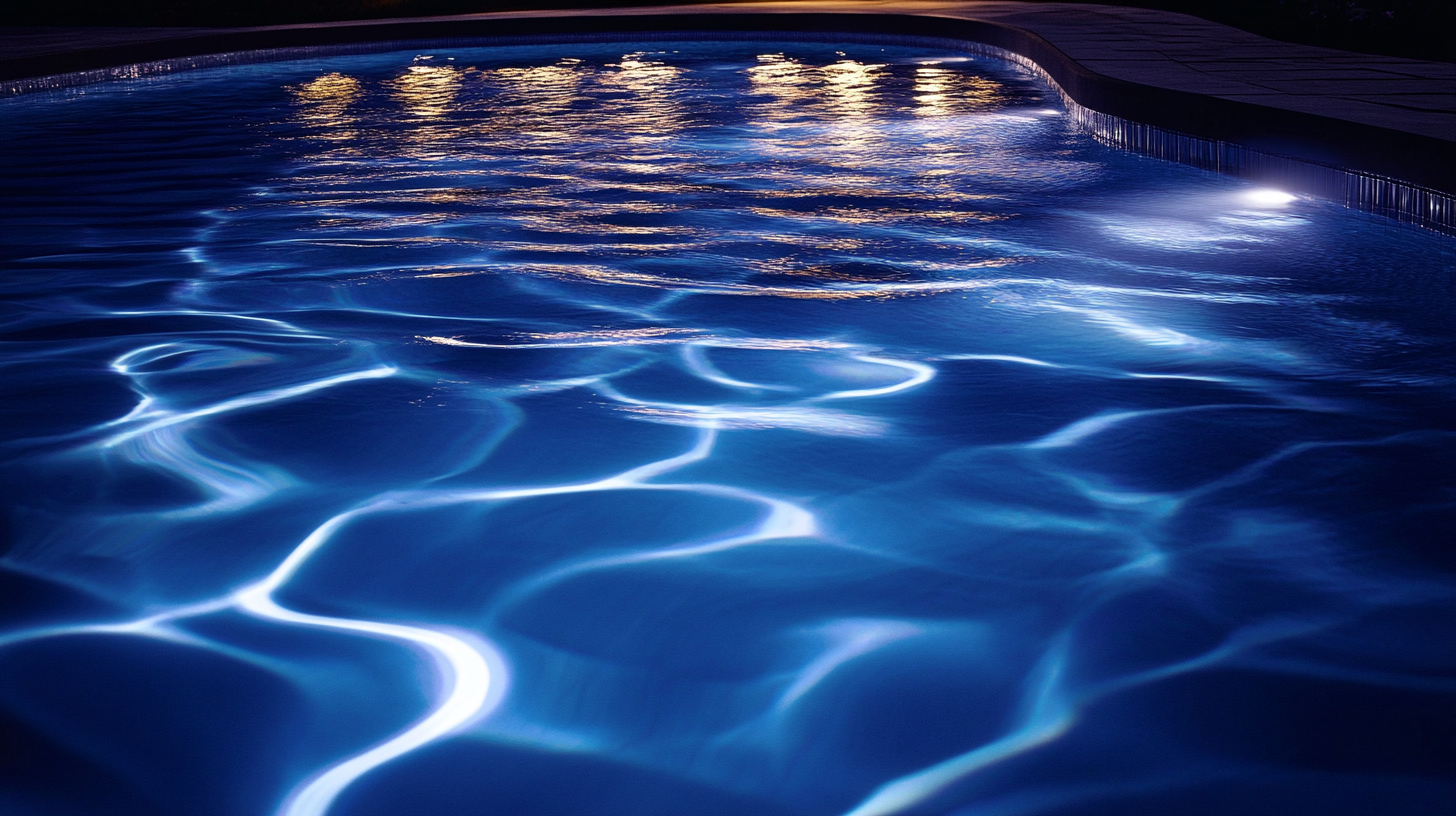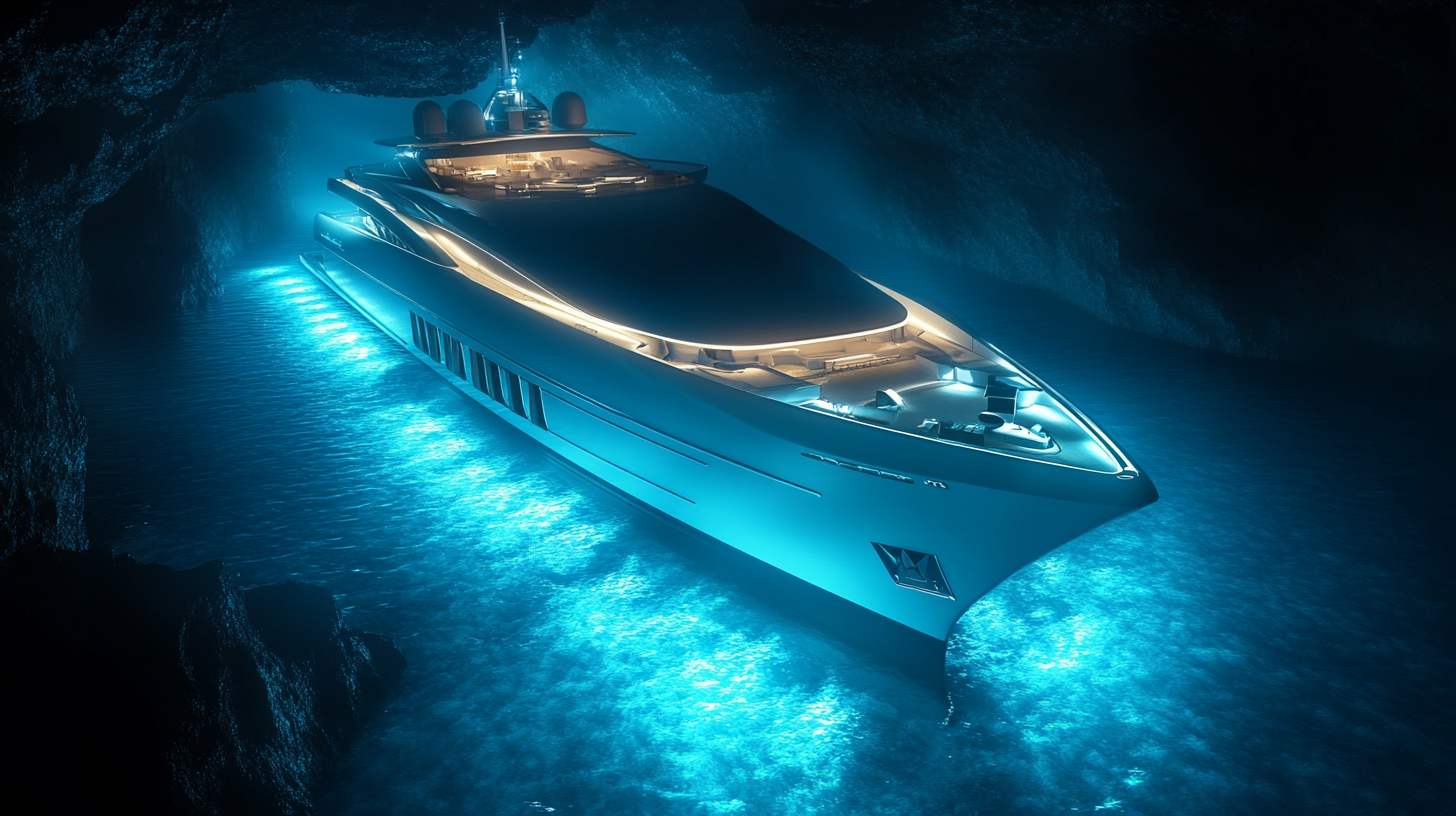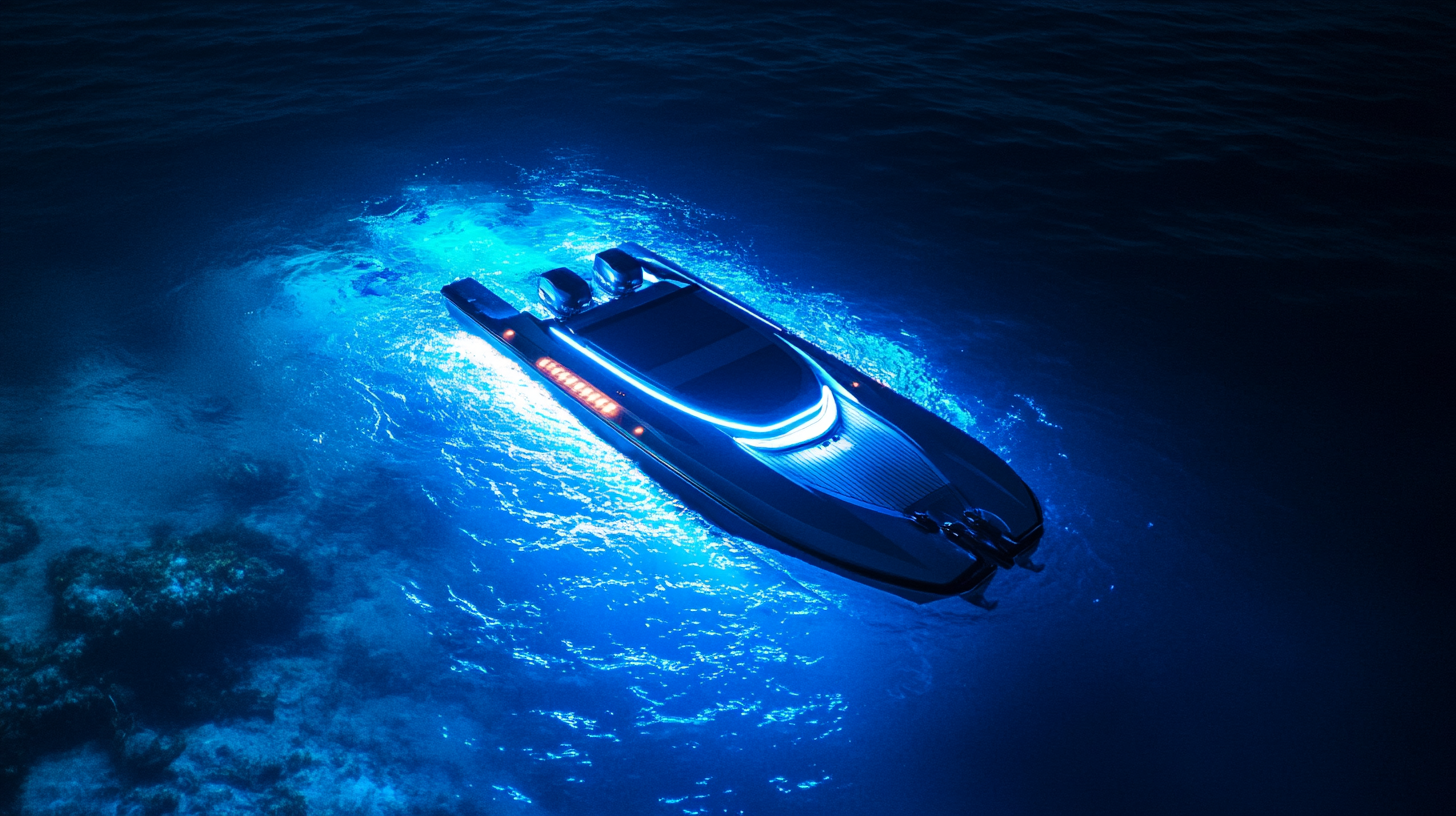Underwater pool lights for various depths
When it comes to enhancing the ambiance and safety of your pool, underwater pool lights are a must-have feature. These lights not only create an inviting atmosphere but also improve nighttime visibility for swimmers. However, the effectiveness of pool lighting can vary significantly depending on the conditions of your pool, making it essential to understand the intricacies of underwater lighting before making any decisions.
First, consider the size and shape of your pool, as well as its various depths. The deeper the water, the more challenging it becomes for light to penetrate effectively. Therefore, a pool with a deep end may require more powerful lights than a shallower one. It’s vital to also factor in the water clarity, as murky water can reduce light transmission, necessitating brighter or more numerous lights to maintain proper visibility.
The material and color of your pool liner can also impact how well light distributes underwater. Dark-colored liners tend to absorb more light, reducing its spread, while lighter colors help reflect light across the pool. Additionally, features like waterfalls, steps, or other architectural elements may cast shadows and need special attention to ensure they are adequately illuminated.
Another factor in understanding underwater lighting needs is the overall aesthetic you want to achieve. For a serene, relaxing environment, soft white or even colored lights that shift through a spectrum may be the best choice. Conversely, for a more vibrant and lively atmosphere, brighter, more direct lighting would bring your pool to life after dark.
Choosing the right light for varying depths
Selecting the right underwater pool lights for varying depths involves more than just choosing a light fixture that looks good; it’s about ensuring the light serves its purpose effectively across all areas of the pool. First and foremost, it’s crucial to recognize that the depth of your pool directly impacts how light behaves underwater. At greater depths, water absorbs more light, meaning the illumination that may seem bright at the surface loses intensity as it descends into the deeper sections of the pool. Therefore, shallow areas might only require lights with lower wattage, while the deep end could benefit from more powerful lights designed to penetrate further down.
Not all pool lights are created equal, and certain types are better suited for specific depths. For instance, LED lights are a popular option because they can be fine-tuned in terms of brightness and color, ensuring consistent illumination throughout various depths of the pool. On the other hand, halogen bulbs, while offering robust brightness, might not be as effective in deeper areas unless you opt for higher wattage. Fiber optic lights are another option, particularly for homeowners looking for a way to add accent lighting without dedicating significant wattage to every fixture.
Beyond the type of light, the placement of fixtures plays a critical role in achieving even lighting throughout the pool. For pools with multiple depths, it’s wise to install more lights in the deeper sections, spaced strategically to minimize shadows and dark spots. Consider aiming lights to cross paths in deeper sections to maximize light coverage or even incorporating lighting at different angles—such as from the sides and the bottom—to ensure that all depths are well-lit.
A distinct but essential consideration is the color temperature of the pool lights. Cool white lights (ranging from 5000K–6500K) provide effective, brighter light for deeper water, making it easier to see down to the pool’s floor. In contrast, warm white options (2700K–3000K) create a gentle ambiance that’s ideal for shallow and mid-depth areas where a softer glow is more desirable. For those looking to add drama and flair, colored lights can be used, though keep in mind that bold colors like blue or red may not be as effective for deeper sections where more intense illumination is needed.
Lastly, don’t forget that placement and type of lighting should also cater to specific pool activities. If your pool sees a lot of evening or nighttime use, especially in the deep end, ensuring that your lights are powerful enough to penetrate those depths becomes even more critical. From safety-focused lighting that ensures every corner is visible to ambient lighting that accentuates the pool’s design features, the right underwater lighting can transform your pool into a stunning nighttime oasis.
Installation tips for effective lighting
When it comes to installing underwater pool lights, ensuring proper placement and technique can make all the difference in both aesthetics and safety. To start, always plan the layout of your pool lights in a way that complements the pool’s contours and various depths. A well-thought-out lighting scheme can emphasize the pool’s features while ensuring that every area, from the shallow end to the deep, is evenly illuminated. This not only enhances the pool’s visual appeal but also ensures swimmers have clear visibility, reducing the risk of accidents.
One of the first steps in installation is to determine the correct number of lights for your pool. A general rule of thumb is to install one light for every 20 feet of pool length, though this can vary based on the pool’s depth and shape. For pools with multiple depths, it’s crucial to consider how the light will travel through the water. Placing lights higher along the pool walls can provide sufficient coverage for shallow areas, but deeper areas might require lights positioned lower or even on the pool floor to achieve optimal brightness.
It’s also essential to consider the distance between lights. Spacing them too far apart can create dark spots or shadows, particularly in pools with diverse features such as steps, coves, or ridges. Ideally, the beam angles of neighboring lights should overlap slightly to ensure a consistent spread of light. By illuminating areas from multiple directions, you can minimize shadowing, making the pool look more inviting and contributing to safer swimming conditions at night.
The angle at which the lights are installed can significantly impact their effectiveness. For example, installing lights parallel to the water’s surface usually creates a horizontal spread that works well for evenly illuminating the pool. However, for pools with considerable depth, angling the lights downward slightly can help focus more light toward the bottom, ensuring that deeper sections are well-lit. Also, aiming a fixture across the pool rather than directly downward can produce a softer, more diffused glow, which is perfect for creating an inviting atmosphere during an evening swim.
When it comes to wiring, safety should be your top priority. Always follow local codes and regulations for underwater lighting installations. Using waterproof connections and conduits is mandatory to prevent water damage and electrical hazards. Additionally, consider using a low-voltage lighting system, which is not only safer but more energy-efficient, reducing your overall energy costs and extending the lifespan of your lights.
Speaking of energy efficiency, LED pool lights are a popular choice for many modern pools, not just because of their energy-saving benefits, but also due to their longevity and versatility. These lights are easy to install and come in a variety of colors and brightness levels, making them suitable for various depths and pool designs. If you’re upgrading from older halogen systems, LED retrofitting kits can simplify the transition, allowing you to enjoy the benefits without a complete overhaul of your lighting setup.
Don’t forget to test your lights before filling up the pool completely. It’s far easier to make adjustments while the pool is only partially filled, rather than having to drain it later, something that could become a costly and time-consuming affair. Once the installation is complete, check the light distribution at night, ensuring that every corner of your pool is appropriately illuminated. If necessary, make fine-tune adjustments to the angles or reposition certain fixtures for better overall coverage.
Maintenance and safety considerations
Regular upkeep ensures that underwater pool lights continue to function effectively and safely, especially when placed at various depths. One significant aspect of maintenance is the regular cleaning of light fixtures. Given that underwater conditions can easily lead to the buildup of algae, mineral deposits, and debris on the surface of the lights, it is vital to schedule periodic cleanings. This not only helps maintain the illumination quality but also prolongs the lifespan of the pool lights. To clean the fixtures, always turn off the power first, and if possible, remove the fixture from the water before cleaning. Use a non-abrasive cleaner and a soft cloth or sponge to scrub the lights gently, ensuring you’re removing any layers of grime without scratching the lenses.
In addition to cleaning, it’s essential to inspect the seals and gaskets regularly. These components prevent water from entering the electrical parts, so any damage or wear can lead to water leakage, posing a risk of short circuits or even electrical hazards. Should you notice any wear and tear, replace these seals immediately. It’s a good habit to inspect these parts seasonally, especially before the start of swimming season when the pool is used more frequently.
Another key aspect of pool light maintenance is monitoring the electrical components. Even though most modern underwater pool lights are highly durable, connections can still become loose over time, or wires may degrade, particularly when exposed to constant underwater pressure. Checking all electrical connections periodically is vital to ensure there is no risk of malfunction. If you are not comfortable dealing with electrical components, it’s highly recommended to hire a professional for this task. Professionals can also perform a water integrity test to ensure that no water is seeping into areas it shouldn’t—something that can be particularly concerning for lights installed at greater depths.
Safety is another crucial consideration when it comes to maintaining underwater pool lights, especially in areas with various depths. Always use GFCI (Ground Fault Circuit Interrupter) outlets for your pool lights. This is a critical safety feature that cuts power if a fault is detected, such as water making contact with a live wire. Regular testing of the GFCI system is advisable, especially before frequent pool use or after a maintenance check has been completed.
For lights installed at deeper sections of the pool, keep in mind that accessing these lights may be more challenging. Always ensure that the pool is fully drained or partially drained to a safe level before attempting any significant repairs or replacements. Doing so not only protects the fixture but also minimizes your exposure to underwater risks and electrical hazards during the maintenance process.
In addition to these safety precautions, consider the impact of environmental factors like weather conditions. If your pool is located in an area that experiences harsh winters, it’s essential to safeguard your lighting system before pool closure. Winterizing your pool lights involves ensuring that the lights are properly turned off and covered, and that all seals are intact to prevent ice damage during freezing conditions.
Lastly, remember that although LED lights generally offer longer lifespans and greater energy efficiency, they are not immune to wear and tear. Check longevity data provided by the manufacturer, often indicating the lifespan of the light in operational hours, and replace the lights before they start to flicker or lose effectiveness. Keeping spare bulbs and replacement parts on hand can save time and stress, ensuring that your underwater pool lights are always in optimal operating condition.
By adhering to these maintenance and safety practices, you’ll not only ensure a bright, inviting pool environment but also protect your investment in the light system, allowing safe and enjoyable swimming at all hours, regardless of the pool’s depth.
Energy efficiency and light longevity
When it comes to maximizing the longevity of your underwater pool lights while keeping energy consumption in check, there are several strategies that can ensure both efficiency and effectiveness across various depths. As a pool owner, you want your lights to shine brightly season after season, without causing an unnecessary spike in your energy bills. Fortunately, with advancements in lighting technology, achieving this balance has become much easier.
First and foremost, it’s essential to understand how different types of lighting technologies perform in terms of energy efficiency and lifespan. For example, LED pool lights stand out as the most energy-efficient option available today. Unlike traditional incandescent or halogen bulbs, LEDs consume a fraction of the power while delivering the same—if not brighter—levels of illumination. This not only reduces your energy usage but also allows you to install more lights without worrying about escalating costs, particularly important for larger pools with varying depths that require consistent lighting throughout.
One of the most significant advantages of LED lights is their longevity. These lights can last up to 30,000 to 50,000 hours, which translates to several years of continuous use before needing a replacement. This is considerably longer than older halogen lights that may only last around 2,000 to 5,000 hours. The extended lifespan of LED lights means fewer replacements and less maintenance, especially for fixtures that are more challenging to access in deeper sections of your pool. With LEDs, not only do you save time and money, but you also reduce the frequency of pool downtime caused by light maintenance.
In addition to longevity, another critical factor contributing to energy efficiency is light distribution. With the right placement and angle, you can minimize the number of lights needed to achieve uniform illumination, even for pools with complex designs and various depths. To optimize efficiency, consider using lights with wide beam angles to cover more surface area with fewer fixtures. This reduces the total number of lights you need, lowering both upfront costs and energy consumption.
Alongside choosing energy-efficient lights, implementing smarter controls can further enhance the effectiveness of your underwater lighting setup. For instance, using timers and dimmers allows you to adjust the brightness based on the time of night or specific activities taking place in the pool. You could dim the lights slightly during casual evening swims to save energy and then increase brightness for safety during more active swimming or pool games. This fine-tuning not only conserves energy but can also extend the lifespan of your lights by reducing the overall load on each fixture.
Another innovative option to consider is the integration of solar-powered pool lights. While they may not yet provide the same level of brightness as high-wattage LED fixtures, solar lights are virtually free to operate and can be a great supplemental lighting solution, particularly in shallower areas of the pool or for accent lighting. Using solar lights, in combination with energy-efficient LEDs in deeper sections, can create a balanced and cost-effective lighting plan that still delivers on visual appeal.
For those looking to upgrade an existing lighting system, retrofitting older fixtures with LED kits offers a substantial boost in energy efficiency without the need for a complete overhaul. Retrofitting allows you to enjoy the benefits of modern light technology, such as lower power consumption and greater longevity, while utilizing your current wiring and installations, thereby reducing both labor and material costs. This is especially beneficial for deep pools where replacing fixtures can be more complex and costly.
No discussion of energy efficiency and longevity would be complete without addressing the importance of regular maintenance. Keeping your pool lights clean and ensuring they are functioning optimally can prevent energy wastage. Dirt, algae, or debris buildup on light lenses can hinder light output, forcing you to run the lights longer or at higher intensities to achieve the desired effect. Regular cleaning, as well as checking for any water leaks or loose connections, will help maintain efficiency and extend the life of the lights.
Finally, staying informed about the latest technological advancements in the field of underwater lighting can provide you with new opportunities to improve both energy efficiency and light longevity. As LED technology continues to evolve, for instance, newer models are becoming even more energy-efficient, offering brighter light with lower power consumption. By upgrading your pool’s lighting system periodically with these advancements, you can ensure that your pool remains not only beautiful but also as energy-efficient as possible.
Focusing on energy efficiency and light longevity will result in a more sustainable and cost-effective underwater lighting setup that performs well across all pool depths. By selecting the right lighting technology, optimizing their placement, and maintaining them properly, you can enjoy a brightly lit pool that is both eco-friendly and wallet-friendly for years to come.


